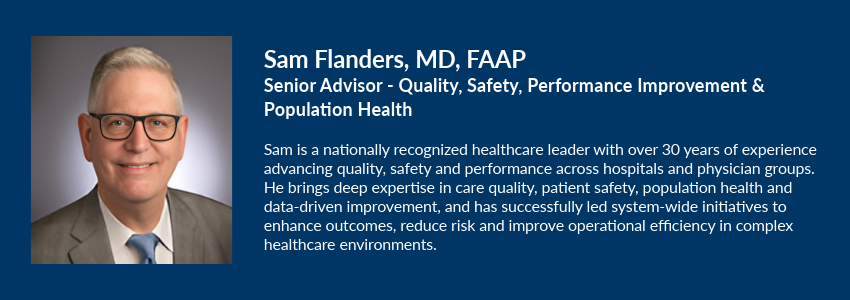
Kada Health News & Insights
BROWSE BY CATEGORY
There’s a popular series of books built around the idea that we shouldn’t “sweat the small stuff.” While that might hold true in some areas of life, I’m increasingly convinced it doesn’t apply to healthcare. In fact, I believe we must sweat the small stuff.
Let me explain why with a few real-world examples.

The OR Tray That Told a Bigger Story
I was working with a Kaizen team in a hospital operating room, focused on reducing the time between surgical cases. During setup for a hip replacement, the scrub technician noticed a small tear in the outer wrapping of a heavy instrument tray. Knowing this could compromise sterility, she set it aside and requested a replacement. The second tray arrived with a similar tear in the same spot. The third tray was intact, and the case proceeded without issue. Problem solved? Not quite. We visited the supply area and noticed a sharp plastic ridge on the edge of the shelf where the trays were stored. It was easy to see how a heavy tray could catch on the edge and tear. A simple fix to the shelving, applied across multiple items, led to fewer damaged trays and smoother operations.A Sign That Made a Difference
In Outpatient Surgery, another team was working to improve patient check-in times. While observing near an elevator, we saw an elderly couple exit and begin searching for the check-in area. It was just a few feet away, but hard to see from their vantage point. They missed the overhead sign and started walking in the wrong direction. We redirected them—but what if we hadn’t been there? The team quickly created a makeshift sign and placed it at eye level near the elevator. Almost immediately, another patient exited, saw the sign and went straight to check-in. A small fix, but one that prevented confusion and delay. After the team noticed more patients noticing the temporary sign, a permanent one was put in place.The Hidden Cost of Supply Runs
On nursing units, I often see nurses or techs leave patient rooms to retrieve supplies. It only takes a minute or two, but those minutes add up. Studies show that nurses spend only about one-third of their time on direct patient care. What pulls them away? Often, it’s small things like multiple trips to the supply room. Some hospitals are addressing this by placing frequently used supplies in or near patient rooms. It’s a simple change with a big impact on time and care quality.Small Stuff, Big Consequences
So, is it really “small stuff”? I’ve had the privilege of observing many hospital and clinic environments. Everywhere I go, I see dozens of small issues that make it harder to care for patients. Some reduce efficiency, others affect the patient experience, and some pose safety risks. For example, what if the scrub tech hadn’t noticed the tear? What if a caregiver was interrupted and forgot a critical step?The Strategic Blind Spot
One of the most overlooked truths about “small stuff” is how often it blocks big goals. These issues aren’t visible from the conference rooms where strategic plans are made, but front-line staff see them every day. And with the right support, they’re eager to fix them. I’ve worked in hospitals where improving ED throughput was a top priority. But building a new ED isn’t the answer when staff struggle to find an IV pump, communicate with nursing units about admissions, locate a working computer or get labs transported quickly. These dozens of small problems can unlock major improvements when solved.Final Thought
In healthcare, sweating the small stuff isn’t a distraction; it’s a strategy. Small changes, when made thoughtfully and consistently, can lead to safer, more efficient and more compassionate care. What are your thoughts? Reach out and let’s start a conversation. The Kada Health Operating System creates a culture of continuous improvement that is effective, rapid,and turns clinicians, front-line staff and administrators alike into problem-solvers, a skill that shouldn’t be exclusive to executive leaders. Please reach out to us if you have questions or are interested in exploring what Kada Health can do to assist your organization.About the Author





